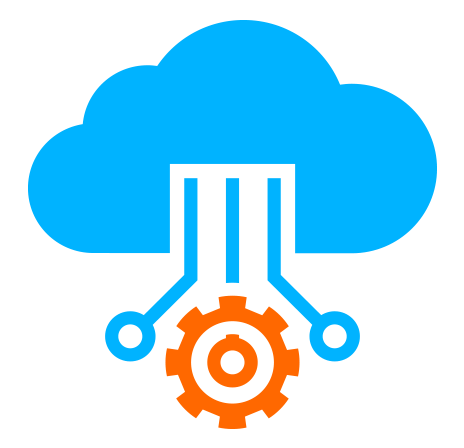 Server
Colocation
Server
Colocation
 CDN
Network
CDN
Network
 Linux Cloud
Hosting
Linux Cloud
Hosting
 VMware Public
Cloud
VMware Public
Cloud
 Multi-Cloud
Hosting
Multi-Cloud
Hosting
 Cloud
Server Hosting
Cloud
Server Hosting
 Kubernetes
Kubernetes
 API Gateway
API Gateway

Deep learning has transformed industries, from healthcare and finance to autonomous vehicles and natural language processing. However, training deep learning models requires massive computational power. This is where GPU servers come into play, providing the high-speed infrastructure needed to accelerate AI workloads.
This article explores the benefits, components, and use cases of GPU servers for deep learning, helping businesses and researchers understand how to leverage this technology effectively.
What Are GPU Servers?
GPU servers are high-performance computing systems equipped with one or more Graphics Processing Units (GPUs) instead of relying solely on traditional CPUs. GPUs are designed to handle parallel processing tasks, making them ideal for deep learning, AI training, and large-scale data analysis.
Moreover, GPU servers can run multiple neural network computations simultaneously, significantly reducing the time required for training complex models.
Key Components of a GPU Server
1. GPUs
The most critical component, GPUs handle matrix operations, tensor calculations, and parallel computations necessary for deep learning. Popular choices include NVIDIA H100, A100, and RTX series GPUs.
2. CPU
While GPUs handle parallel computations, CPUs manage system operations, orchestration, and pre-processing tasks. High-performance multi-core CPUs complement GPU efficiency.
3. Memory (RAM)
Adequate RAM ensures smooth data handling, especially for large datasets used in training AI models.
4. Storage
SSD storage is preferred for fast read/write speeds, enabling quick data access during training.
5. Networking
High-speed network interfaces ensure efficient communication between GPUs in multi-GPU setups, reducing latency in distributed training environments.
Benefits of Using GPU Servers for Deep Learning
GPU servers reduce deep learning training time from days to hours by performing multiple operations simultaneously. This speed allows teams to iterate faster and experiment with larger and more complex models.
GPU servers can be scaled horizontally by adding more GPUs or servers, accommodating growing computational demands. This makes them ideal for enterprises handling large-scale AI workloads.
Although GPU servers are a significant investment, they are more cost-effective than relying on a large number of CPU servers to achieve similar performance. Moreover, cloud GPU servers offer on-demand access, reducing upfront costs.
GPU servers support various deep learning frameworks, including TensorFlow, PyTorch, Keras, and MXNet, allowing developers to use the tools they prefer.
Common Use Cases
1. Natural Language Processing (NLP)
Training large language models (LLMs) like ChatGPT requires GPU servers for fast computation and handling huge datasets.
2. Computer Vision
Applications like object detection, facial recognition, and autonomous vehicles rely on GPU acceleration to process images and video streams efficiently.
3. Recommendation Systems
Retail, entertainment, and e-commerce platforms use GPU servers to analyze user behavior and deliver personalized recommendations.
4. Healthcare and Biotechnology
GPU servers accelerate tasks such as genomic analysis, drug discovery, and medical imaging, improving accuracy and reducing processing time.
5. Scientific Research
Researchers running simulations, climate models, or physics computations benefit from the parallel processing power of GPU servers.
GPU Servers vs Traditional CPU Servers
GPU servers are not a replacement for CPUs but complement traditional servers. CPUs handle sequential tasks efficiently, while GPUs excel at parallel computations required in deep learning.
Moreover, using GPU servers for AI allows businesses to reduce training time, improve model accuracy, and handle larger datasets. Traditional CPU servers would take significantly longer to process the same workloads.
Best Practices for Deploying GPU Servers
- Choose the Right GPU: Match GPU models to workload requirements (e.g., H100 or A100 for large-scale AI).
- Optimize Cooling and Power: High-performance GPUs generate heat and consume significant power, so data center planning is essential.
- Leverage Cloud or On-Premises Options: Cloud GPU servers offer flexibility, while on-premises servers provide more control and security.
- Integrate with AI Frameworks: Ensure compatibility with TensorFlow, PyTorch, or other frameworks used in your workflows.
Conclusion
GPU servers are the backbone of modern deep learning infrastructure. By enabling fast parallel processing, scalability, and flexibility, they allow businesses and researchers to train complex AI models efficiently.
Moreover, investing in GPU servers, whether on-premises or through cloud providers, helps organizations stay competitive in AI-driven industries. In addition, leveraging best practices ensures maximum performance, reliability, and return on investment, making GPU servers an essential tool for high-speed AI infrastructure.

Let’s talk about the future, and make it happen!
By continuing to use and navigate this website, you are agreeing to the use of cookies.
Find out more


